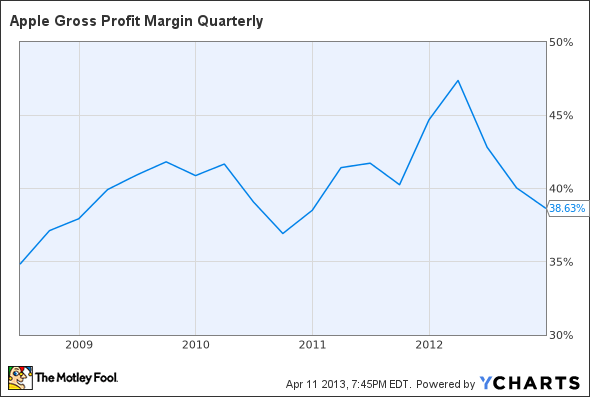There's a certain thrill involved with holding small cap stocks in your portfolio. After all, given the relatively tiny size of their underlying businesses, these are the stocks which often hold the greatest prospects for growth over the long run.
To be sure, who wouldn't love to see his or her portfolio explode to the upside as today's small caps become tomorrow's massively profitable industry giants?
So what's the catch? Small-cap stocks tend to be much more volatile than their larger brethren. As a result, as long as nothing has happened to significantly change your buying thesis, you need to be willing to stick it out through thick and thin to realize truly substantial long-term gains.
With that in mind, here are two small cap stocks which are trading significantly below their 52-week-highs, and why I think you should buy them before they bounce back:
| InvenSense (NYSE: INVN ) | $854 million | 45% | $10.15 | ***** |
| MAKO Surgical (NASDAQ: MAKO ) | $532 million | 74% | $11.27 | ***** |
Source: Motley Fool CAPS
Sensing long-term opportunity
First up, shares of motion sensor specialist InvenSense (NYSE: INVN ) are still reeling from a number of disappointing earnings reports and downgrades over the past year. The most recent "bad" news came from analysts at Maxim three weeks ago, who maintained their "Buy" rating on the stock, but lowered its price target to $12 per share, from $17. Even if Maxim is justified in its downgrade, however, I'm betting it's difficult to find too many investors who wouldn't be happy with an 18% gain should the stock reach the stated target
What's more, InvenSense boasts strong free cash flow, and a sterling balance sheet, with $193 million in cash and no debt. In addition, its shares currently trade at 20 times trailing earnings and just 13.5 times forward estimates -- a perfectly reasonable premium for a small-cap stock whose products have the potential to play an integral part in the fast-growing global market for mobile device sensors.
Robotic-assisted profits
I've made no secret of my optimism for shares of MAKO Surgical (NASDAQ: MAKO ) , despite the company's gut-wrenching fall from grace over the past year; 2012 included one particularly brutal quarterly earnings report, which caused a single day drop of as much as 37%. Now, I'm a patient guy, but I have to admit that that one definitely made me think twice about selling what still remains one of my largest personal holdings.
On one hand, MAKO management had undoubtedly overestimated its ability to sell expensive robotic surgery equipment to hospitals during one of the most challenging economic environments in recent history. As a result, they lost plenty of rapport with investors after twice being forced to lower their system sales guidance.
Even still, I remain convinced MAKO's punishment doesn't fit the crime, especially after management provided some solid answers to wary investors' questions during its most recent quarterly earnings call.
Foolish final thoughts
When the rubber hits the road, I think InvenSense and MAKO both represent fantastic small-cap stocks for patient long-term investors. If you can take the heat, these companies may just be able to help you absolutely thrash the broader market's returns.
However, if you'd still like to learn more about MAKO, Fool.com analyst and MAKO expert David Meier has authored a premium research report covering all of the must-know details on the company, including key areas to watch and risks looming in the future for the medical robotics company. Claim your copy by clicking here now.


 The tax compromise that lawmakers agreed to at the beginning of 2013 made several substantial changes to the tax laws, and a few of those changes actually made the marriage penalty worse for some couples, especially high-income couples where both spouses work and have considerable income. Let's look at these three provisions and how much they'll boost the marriage penalty's impact in 2013 and beyond.
The tax compromise that lawmakers agreed to at the beginning of 2013 made several substantial changes to the tax laws, and a few of those changes actually made the marriage penalty worse for some couples, especially high-income couples where both spouses work and have considerable income. Let's look at these three provisions and how much they'll boost the marriage penalty's impact in 2013 and beyond.
 Getty Images Family Dollar reported a weaker-than-expected quarterly profit on Wednesday, blaming a delay in tax refunds for hurting sales at the end of January and early February.
Getty Images Family Dollar reported a weaker-than-expected quarterly profit on Wednesday, blaming a delay in tax refunds for hurting sales at the end of January and early February. Zcopley, Flickr.com
Zcopley, Flickr.com  bitcoincharts.com
bitcoincharts.com 
